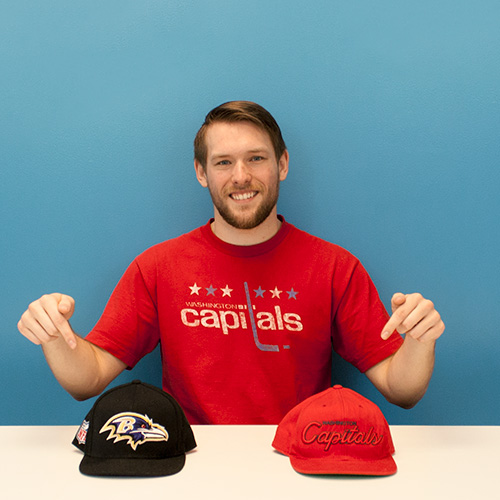
How to Scale up Your Facebook Ads Budget the Smart Way
There comes a time when you want to reach more people and get more results by increasing your budget on Facebook ads. So how do you do that as effectively and efficiently without wasting money? This article will answer that question. I interviewed three of our Facebook ad experts to determine the best way to scale a Facebook ads budget profitably.
Tyler Carson

Have Your Ducks Lined Up Before You Begin
Before you scale your Facebook ads budget, make sure you’re already hitting (or beating) your goal, whether that’s a target cost per acquisition (CPA), a certain number of event registrations, a cost per purchase, or something else.
You need a solid strategy and goal before you consider scaling if you want to see the most success. And that means you should already have a goal against which you can measure your success.
Have Realistic Expectations
If you change your targeting while scaling, expect some dips in performance. When you target larger audiences, it’s normal to find that you’re not as cost efficient as you were before.
Pay attention to how far away you stray from your target goal as you scale up Facebook ads. If you stay close to your target CPA as you scale, for example, it’s worth continuing. If you shoot past your target CPA goal, reconsider how fast you’re increasing budget.
You should also expect to hit diminishing returns at some point. That’s normal because you’ll run out of audiences and some will be too small.
Isolate Winning Audience Segments
As you scale, identify high-performing demographics from your main audience and create a new audience to target those groups of people specifically.
To illustrate, let’s say you’re targeting a large audience to sell contact lenses. You may find that women between ages 25 and 40 seem to buy contact lenses more often than other groups of customers. Armed with this insight, create an audience targeting that specific demographic with tailored messaging.
You can re-allocate part of your ad budget toward that new audience. Alternatively, you can increase your budget for that new audience while leaving the rest untouched. Even though you may end up exceeding your previous budget, you’ll still be as cost efficient as possible with that new audience.
Now, rinse and repeat. Keep looking for fresh audiences and letting the data tell you which ones are worth pursuing. Segmenting your primary audience like this can allow you to scale your budget efficiently.
Of course, you can segment your audience based on factors beyond just demographics, such as ad placement (right-hand sidebar versus the feed), device type (desktop versus mobile), or even social media platforms (Facebook versus LinkedIn).
And don’t forget to pay attention to frequency. You always need to keep refreshing your ads with new ones because people will tire of seeing the same ads. If you don’t refresh your imagery, people will stop engaging with your ads.
Danny Lopez

Get As Much As You Can
When scaling up Facebook ads, get as many conversions as quickly as you can. Once I’ve set up a campaign and it gets 50 conversions, I duplicate each ad set and rinse and repeat, increasing my reach and budget. I let the tracking pixel and algorithm do the heavy lifting for me.
Use cost per acquisition (CPA) as your main metric. I have a different philosophy from Tyler since I don’t mind if my CPA goes up as I scale aggressively. It will go back down later if you optimize properly, so you shouldn’t let that startle you when you’re scaling up Facebook ads.
Scaling Budget the Smart Way
If you’re a huge company and you have the money and a large audience, tack on an extra zero at the end of your budget. Smaller companies with small audiences that want to scale Facebook ads need to expand look-alike audiences and think about new audiences. You can let the algorithm expand those audiences for you.
For example, our #1 converter for a small client was finding users interested in the company plus a 1–2% lookalike audience. There’s a bit of overlap but enough room to grow, such that it works well and lets you create new audiences.
If you’re getting lots of conversions, you’ll want to make a target CPA your key performance indicator (KPI) and stay as close as possible to that number as you scale. There are going to be things you cut back on to do so as you scale marketing.
Sculpting as You Scale
In one example, I was getting mixed results for a financial services company as we scaled. I noticed that two U.S. states were twice as expensive as other states, so we cut down on ads targeting people in those states. Removing those audiences while we scaled helped us to keep our CPA as low as possible.
Different Rules for Different Companies
Every company has different needs and campaigns. You don’t need different scaling methods—you just need some unique perspectives and to make sure that you’re looking at the numbers from fresh angles.
As another example, I worked with an app that integrated with electronic benefit transfer (EBT) cards that delivered the best deals on emergency food. For this kind of app, your targeting and tracking have to be spot on. The platform also has to have excellent tracking since any inaccurate tracking can skew your performance.
Another client has a mobile app; they’re looking for new installs and want their users to take a custom action within the app. At the beginning of our engagement, we mapped that custom in-app action to a standard Facebook conversion event (in this case, “add to cart”) to give us accurate tracking and measurement for optimizing our campaigns. At first, we’d see $5 installs and $8 for the custom event. With new creative and some time to optimize our audience, we’re down to $3 and $6.50, respectively.
Charlee Boone

Check Your Tracking
The most important point I can tell you is to ensure that your web tracking is accurate. You must ensure that the pixel is catching what it’s supposed to and firing when it needs to because everything relies on that pixel. If it’s not set up 100% correctly, your data accuracy will suffer.
Segmenting
As you scale your Facebook budget, I recommend segmenting your audience first so you can create a more accurate lookalike audience. This only works if you have enough people in your database or CRM. For an educational company I worked with, I segmented by managers versus team members. This segmentation allowed me to write copy personalized to each group to get more of a response as I was scaling up Facebook ads.
Using Data to Back Your Ideas
Regarding lookalike audiences, start by testing just 1%. If that goes well, try 3%, and then 5%. Managers and department heads will be more receptive to this step-by-step approach than delving into more complicated experiments. To help get them on the same page, establish a baseline number and expand on that with pixel data. Having data to back your ideas is a solid way to get manager buy-in.

Understand the Prospect’s Perspective
With larger B2B companies, the first step is to get a list of the top 100 dream companies they’d like to reach. You can reach these prospects with account-based marketing. Some people believe that the only people who can buy their products are managers, but don’t forget that executives and individual employees influence them as well. Scaling Facebook ads means expanding your horizons instead of just limiting yourself to one specific audience.
Facebook has lots of placement options, but there are only a few that bring the numbers you’re after. Everything else is just for brand awareness. If app downloads are your KPI, you shouldn’t interrupt that experience with the wrong placement types. It’s best to target placements that put you in front of users of apps or games because they’re more open to trying something they’re already doing.
How to Scale Facebook Ads: The Bottom Line
As you can see, there are different ways to go about a Facebook ad scaling strategy. Planning, taking data-backed, sensible steps, and expanding audiences while you scale are a few smart ways to manage your spend while meeting and even exceeding your target performance. Far too often, marketers focus too much on the growth part at the expense of other areas, and that can cripple your entire operation. Follow the advice from these experts so that this doesn’t happen to you!
Most newsletters suck...
So while we technically have to call this a daily newsletter so people know what it is, it's anything but.
You won't find any 'industry standards' or 'guru best practices' here - only the real stuff that actually moves the needle.






